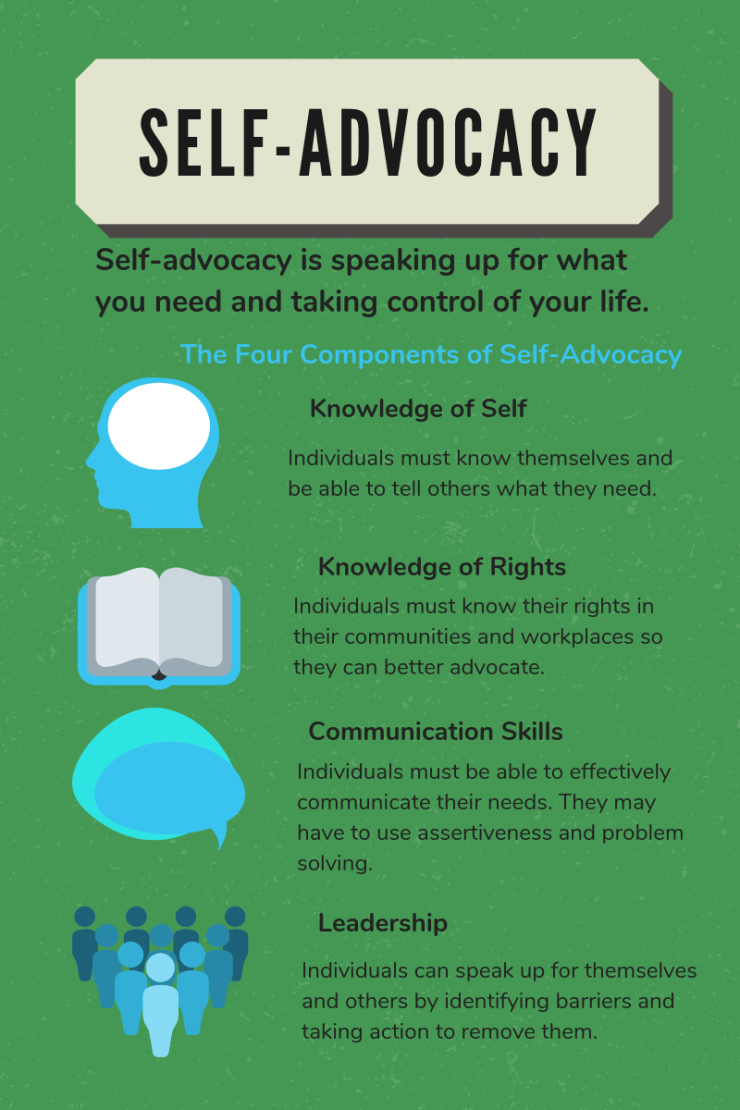Do you feel like your students lack self-advocacy skills? Have you always wanted to learn more about teaching self-advocacy skills? This site can support you with information, lesson plans, and resources. Get started by watching this video on self-advocacy instruction:
A Framework for Self-Advocacy Development:
There are many different definitions for self-advocacy. Prater, Smith Redman, Anderson & Gibb (2014) argue that self-advocacy is the ability “to speak up and ask for what you need” (p.99). Many of the lessons on this website include this definition for students.
This website uses a more expansive definition for educators in order to support their instruction and interventions with students. Test, Fowler, Wood, Brewer and Eddy (2005) reviewed the literature until 2003 and developed a conceptual framework to support the development of instructional strategies and research in self-advocacy development. In their framework, Test et al. (2005) define self-advocacy as a construct of four components: knowledge of self, knowledge of rights, communication, and leadership.
Test et al. (2005) argue that for individuals to learn to self-advocate, they must develop and improve their ‘knowledge of self’ and be more aware of their strengths, weaknesses, and needs. Individuals must know themselves before they can tell others what they need. They further found that individuals also must gain a ‘knowledge of rights’ and explicitly learn about the rights they are entitled to in their community, workplace, and/or educational setting in regards to their learning disability before they can advocate effectively. Individuals must also further their ‘communication’ skills to be able to request accommodations and supports. They must be able to effectively communicate their knowledge of self and rights, and this may include the use of negotiation, assertiveness, and problem solving (Test et al, 2005). The last component for self-advocacy, ‘leadership’, is the skill that enables individuals to advocate for both self and others. It is not required to advocate for oneself but is often a natural progression in the development of self-advocacy skills in many people.
These four constructs serve as the framework for many of the lessons, resources, and interventions on this website which can support self-advocacy development. They also are used to frame some of the sample measurable self-advocacy goals which can be integrated in a student’s Individual Education Plan (IEP).

Learn about our Self-Advocacy Lessons

You must be logged in to post a comment.